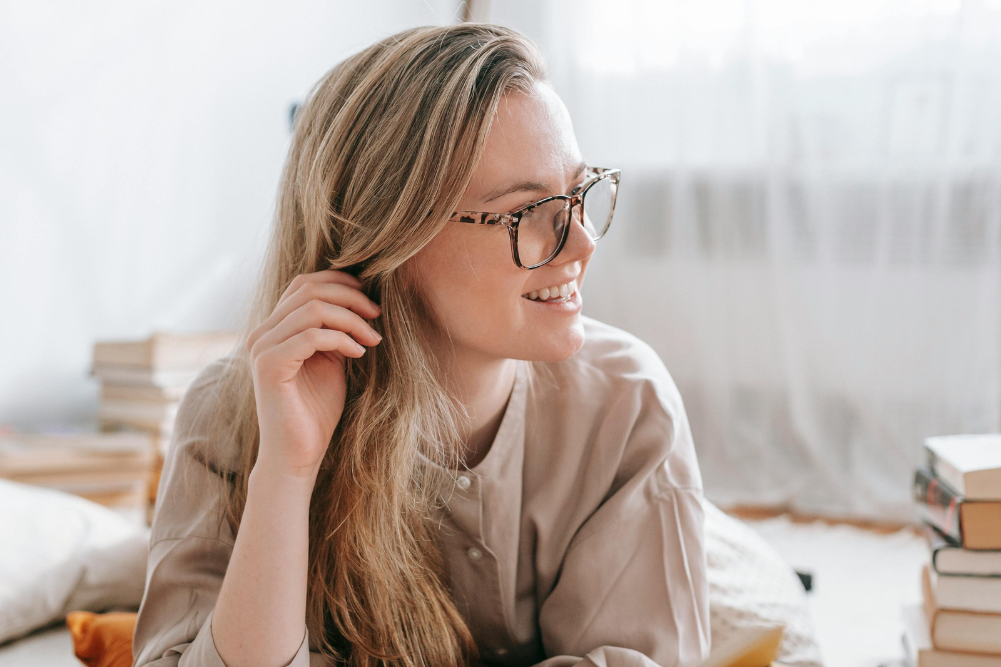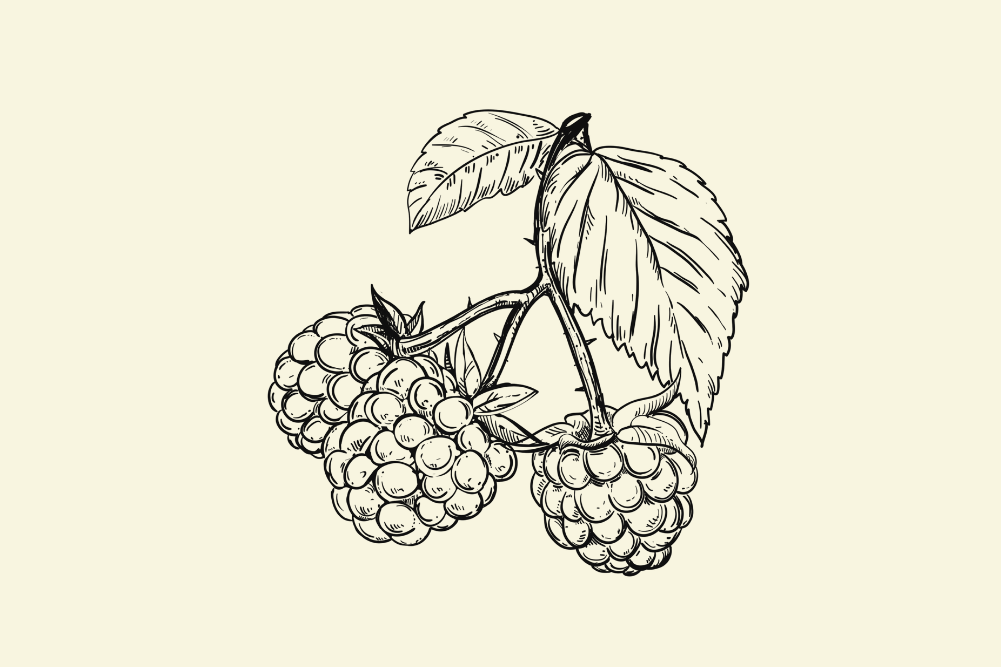Homemade muscle soothers
Shopper’s shoulder. Data entry arm. Treadmill glutes. Think modern living’s enough to make you sore all over? Well, ancient people carried water, ground wheat and planted crops by hand, so you can bet they felt the effects of exertion in their muscles, too. Taking a cue from their hard-won experience, we’ve pulled together the best DIY remedies for sore muscles from traditional cultures around the globe. So mix them up, sit back and breathe a long sigh of relief.
Eucalyptus
TRADITION
Aboriginal Australian
HISTORY
In indigenous traditions, eucalyptus branches were central to spiritual ceremonies and often burnt to purify the air and spirit. The eucalypt was called the “fever tree”, as the oil from the leaves was used to treat a range of illnesses as well as to heal wounds and injuries.
HOW IT WORKS
The leaves of the eucalyptus tree contain a pungent oil that has a powerful relaxing aromatherapeutic quality. When absorbed into the skin, eucalyptus oil acts as an analgaesic, diminishing the sensation of pain, and helps to heal sprains and injuries by increasing blood flow to the muscle tissue.
TRY IT
Add 20 drops of eucalyptus oil to hot bath water, massage directly into the skin or make an ointment with the following recipe:
Ingredients
2 tbsp jojoba oil
4 tsp shea butter
1 tsp beeswax pellets
25ml eucalyptus oil
Directions
- Melt the jojoba oil, shea butter and beeswax on the stovetop in a small saucepan.
- When it becomes liquid, mix in the eucalyptus oil.
- Take off the heat and pour into a small container with a lid. Allow to set.
- Rub the ointment into sore muscles or after exercise as a preventive measure.
BONUS EFFECT
Take advantage of eucalyptus’s antiseptic and immune-boosting power by using it throughout the winter in an air diffuser.
Ginger
TRADITION
Thai
HISTORY
For centuries, farmers in Thailand have applied ginger and rice topically to relieve muscle soreness and tension as well as using it to flavour their cuisine.
HOW IT WORKS
Research has found that ginger’s active compounds work as a potent anti-inflammatory — similar to non-steroidal anti-inflammatory drugs that are readily purchased at the chemist. The juice of freshly grated ginger massaged into joints and muscles will generate heat due to its vasodilatory effects, increasing circulation, which has been proven to promote tissue and muscle repair.
TRY IT
Apply ginger as a hot compress in the Thai tradition:
Ingredients
2 large ginger roots
1 metre cheesecloth or other natural fibre
natural fibre string
Directions
- Boil 3 litres of water in a large pot.
- Drape the cloth over a bowl and finely grate the unpeeled ginger into the cloth until you have about ½ cup.
- Bring the four corners of the cloth together to enclose the grated ginger, twirl it to make a neck and tie the neck with string to hold it together.
- Once the water has boiled, take it off the heat and let the water settle. Place the ginger compress in the pot and pour in any excess ginger juice as well.
- Cover your bed, floor or couch with an old blanket or sheet and place the pot nearby.
- Pull the compress out of the pot with tongs and let it cool enough so you can wring out the water, then press onto the area of soreness.
- When it cools, put it back in the pot to warm up again and repeat. (You can make two compresses to keep the heat continuous.)
BONUS EFFECT
Add plenty of fresh ginger to stirfries or tea to enhance circulation throughout the body and increase heart health.
Puriri
TRADITION
MÄori
HISTORY
Rongoa MÄori — traditional MÄori medicine — involved a holistic approach that included mauri (spark or life force), wairua (spirit) and tapu (natural law). Infusions made from the leaves and flowers of the puriri tree, a native New Zealand evergreen, were used for bathing sore muscles, backache and sprains.
HOW IT WORKS
Puriri is said to act as a relaxant, though few formal scientific studies have been carried out.
TRY IT
Make a puriri bath teabag:
Ingredients
A handful of fresh or dry puriri leaves
1 metre natural cloth
Directions
- Wrap the leaves in the cloth and tie at the top.
- Fill a bath one-quarter full with very hot water (use water from a kettle if your tap water is only warm.
- Steep the puriri bag in the water for 15 minutes.
- Fill the rest of the bath with water as warm as you can bear, leaving the bag in the water.
- Lie back in the puriri-infused water for half an hour, placing the bag on any sore spots if you wish.
BONUS EFFECT
The scent is also said to balance hormones, so if you’re feeling a little pre-menstrual, a puriri flower in your hair may be a sweet uplifter.
Turmeric
TRADITION
Ayurvedic
HISTORY
Turmeric is used throughout India to flavour and add yellow colouring to many dishes. For muscle soreness, practitioners of Ayurveda (the 5000-year-old Indian science of life) prescribe massage with Mahanarayan oil, which contains a combination of nearly 30 muscle-soothing ingredients, including turmeric.
HOW IT WORKS
The active ingredient of turmeric, curcumin, has been widely studied as a natural anti-inflammatory when taken internally as well as applied to the skin: reducing inflammation in muscles and joints will ease pain.
TRY IT
Turmeric can be bought in capsule form or applied externally as a paste, but for a tasty approach build turmeric into your diet by cooking curries, soups and rice with the spice, or try this delicious turmeric chai latte.
Ingredients
½ cup spring or distilled water
¼ tsp turmeric powder
3 cardamom pods
3 cloves
½ cinnamon stick (or ¼ tsp cinnamon powder)
Grind of black pepper
½ cup milk
Honey to taste
Directions
- Bring water to the boil in a small saucepan.
- Reduce heat, add spices and simmer for 5 minutes
- Add milk and heat just to boiling point
- Strain tea into a cup or teapot and sweeten with honey if desired.
BONUS EFFECT
The second-longest-living population in the world, the Japanese from the island of Okinawa, drink turmeric tea daily, so regularly including it in your diet may boost your longevity.
Arnica
TRADITION
American Indian, European, Russian
HISTORY
Arnica grows copiously across both North America and northern Europe and was used to heal wounds and bruising in traditional medicine on both continents. It was traditionally made into liniments and ointments for external use as it is toxic if ingested.
HOW IT WORKS
Recent studies have detected that arnica can be absorbed into the skin, where it protects damaged blood vessels, thus reducing and preventing bruising. Arnica is also a popular ingredient in homoeopathy (where it can be ingested due to the extreme levels of dilution).
TRY IT
Rub this arnica-infused oil into bruises or sore spots, but be sure to avoid any broken skin.
Ingredients
50g fresh or dried arnica flowers
25ml ethanol
350ml olive oil
Directions
- Break up the flowers and place in a 500ml jar.
- Pour the alcohol over the flowers and allow the mixture to sit for one hour.
- Add the oil and stir, then seal the jar and leave in the sunshine or a warm place for 2–3 days.
- Strain the oil through a fine sieve or cloth. This should yield approximately 300ml oil.
- Store in an airtight glass container in a cool place out of sunlight.
BONUS EFFECT
Infusing arnica blossoms into water can make an effective mouthwash to treat swollen gums and mouth ulcers, but be sure not to swallow.
Cayenne
TRADITION
Aztec
HISTORY
This incredibly spicy red fruit is often referred to as chili, which is its Aztec name. The Aztecs and other Central American cultures revered it as a medicine and combined it with cacao as a ritual beverage.
Christopher Columbus is said to have taken cayenne with him to Europe, where it gained popularity as a remedy for rheumatoid arthritis.
HOW IT WORKS
Capsaicin is the most active ingredient in cayenne. Studies have shown that topical application temporarily depletes substance P in the sensory nerve cells, inhibiting the body’s ability to relay pain signals to the brain. Cayenne is also a powerful circulatory stimulant, which aids healing.
TRY IT
Make this super-easy cayenne ointment and rub it into muscle tissue or arthritis-affected areas once or twice a day.
Ingredients
5 tbsp Vaseline
1 tbsp cayenne powder
Directions
- Melt the Vaseline on the stovetop or by leaving it in warm sun.
- Thoroughly blend the cayenne into the soft Vaseline.
- Seal in a container and store in a cool place until recongealed.
BONUS EFFECT
Cayenne is a potent hypoglycaemic agent, which means anyone with type 2 diabetics or high blood sugar will benefit from adding a pinch of cayenne in cooking.
Peppermint
TRADITION
Egyptian
HISTORY
Dried mint leaves have been found in Egyptian tombs dating back to 1000 BCE. The Egyptians are known to have used the herb to flavour food and wine as well as for multiple medicinal uses — a practice they passed on to the Greeks and Romans. In the Islamic world it is still traditional to offer mint tea to visitors on their arrival.
HOW IT WORKS
This cooling, relaxing herb contains a high percentage of menthol, a crystalline alcohol that has been proven to reduce inflammation and act as an anti-spasmodic (calming muscle spasms or cramps). The evaporative nature of menthol brings a cooling sensation to the skin as well a mild anaesthetic effect. When ingested, especially as a tea, the herb’s sedative effect can also relieve stress-induced muscle tension, and the scent has a similar aromatherapeutic effect.
TRY IT
Peppermint can be used in its raw leaf form as a topical poultice or as a refreshing addition to food or drinks. You can take advantage of its healing benefits all day by carrying a revitalising peppermint hydrosol and spraying it into the air or onto the skin.
Ingredients
1 cup fresh mint leaves (or ¼ cup dried mint)
1 cup spring or distilled water
Bottle with fine spray (mister) top
Directions
- Mix mint and water in a small saucepan with a tight-fitting lid.
- With the lid on, bring to the boil then take off the heat.
- When completely cool, remove the lid, being sure to return any condensation collected on the lid back into the pot.
- Strain out the leaves through a fine sieve or clean natural cloth and pour into the bottle.
BONUS EFFECT
Double-blind tests have proved that rubbing peppermint oil on the temples is as effective at relieving headaches as aspirin.
German Chamomile
TRADITION
German HISTORY
The white and yellow daisy-like flowers of chamomile just scream “the hills are alive” and the German variety (as distinct from the Roman or English) is aptly prized as a spirit lifter. German chamomile has been taken for digestive problems and applied to injuries and burns since as far back as the 1st century.
HOW IT WORKS
The German E Commission, regarded as an authority on herbal treatments, has recommended chamomile to combat inflammation and stimulate the regeneration of cell tissue. Chamomile contains flavonoids (the anti-inflammatory effects of which are being studied), salicylates (also found in aspirin), spiroether (an anti-spasmodic, it relaxes tense muscles) and the phytochemical apigenin (which has been found to mildly depress the central nervous system, aiding whole-body relaxation).
TRY IT
It’s easy to get into chamomile as a tea, steeping fresh or dried whole flower heads or a teabag for 5–10 minutes (German authorities recommend using a heaped tablespoon of the flowers for every 150ml of water), but for topical application, along with aromatherapy benefits, try making your own herbal heat pad.
Ingredients
1 metre flannel or cotton
3 tbsp dried chamomile flower heads
10 drops chamomile essential oil
2 cups linseed (flaxseed)
Directions
- Cut the fabric into a square of about 40cm (or a U shape for your neck).
- Fold in half (inside out) and sew the long side and one short side closed with very tight stitches.
- Break up the flower heads, evenly distribute the essential oil onto them, then mix with the linseed.
- Turn the pillow right side out and fill about half full with the linseed mixture.
- Sew the open end closed.
- Spray the pad lightly with a water spritzer then heat it in the microwave for a couple of minutes before applying.
BONUS EFFECT
To enhance the Heidi look, lift blonde or light brown hair a shade by using a strong brew of chamomile tea as a final rinse after shampooing. Don’t wash the tea out; just towel dry and give it some sun exposure for a few minutes.
Epsom salts
TRADITION
English
HISTORY
In 1695, Nehemia Grew published an article describing the medicinal properties of salt crystals derived from natural mineral water in Epsom, England. The elemental ingredients — magnesium and sulphate — found fame under the name Epsom salts and soon became common ingredients in bath salts designed to alleviate muscle soreness and cure skin conditions.
HOW IT WORKS
Studies have shown that magnesium sulphate is able to be absorbed through the skin. Magnesium performs multiple functions in the body and is a key electrolyte involved with muscle relaxation — calcium is required for muscles to tense — so magnesium deficiency is a common cause of cramps. Adequate intake of the element is also required for the body to convert food into energy. Sulphates are essential to the production of protein in the joint tissues, potentially explaining why Epsom salts assist in relieving arthritis pain.
TRY IT
You can reap the benefits of deep relaxation along with a magnesium sulphate infusion by soaking in a bath of Epsom salts spiked with essential oils that are known for their calming aromatherapeutic properties — try lavender, chamomile, geranium, jasmine, rose, ylang ylang, sandalwood or marjoram.
Ingredients
2 cups Epsom salts
20 drops essential oil
3 tbsp dried lavender or chamomile blossoms or rose petals
Directions
- Pour Epsom salts into a large metal or glass bowl (plastic and wood are too porous).
- Evenly distribute the essential oil slowly over the salts, constantly stirring with a metal spoon.
- Continue mixing until the oils are evenly distributed.
- Add the dried flowers and mix through.
- Store mixture in an airtight glass or metal container, or pour straight into a warm-to-hot bath and allow to dissolve.
BONUS EFFECT
Magnesium may also help to reduce insomnia and anxiety — studies show that women deficient in magnesium have more excitable nervous systems. If you ever needed an excuse for a relaxing bath, this has got to be it.
Wintergreen
TRADITION
American Indian
HISTORY
North American tribes, including the Sioux, Penobscot and Nez Perce nations, have long used wintergreen — making it into tea to treat colds or poultices to apply to arthritis and chewing the leaves to relieve toothache.
HOW IT WORKS
In the 1800s, pharmacologists discovered the plant’s essential oil is composed of about 90 per cent methyl salicylate, a chemical closely related to aspirin, which acts as both an analgaesic and anti-inflammatory.
TRY IT
Wintergreen is commonly available in over-the-counter ointments for temporary pain relief, but in North America wintergreen is most often enjoyed in root beer (their version of ginger beer). This refreshing soft drink will hit the spot after summer exertion and help you feel no pain without a drop of alcohol.
Ingredients
5L water
1kg molasses
2 tbsp dry yeast
2 tbsp wintergreen leaves
½ cup sassafras root
Directions
- Combine the water and molasses in a large pot and heat just to the boiling point. Remove from the heat and allow to stand for two hours.
- Stir in the yeast, wintergreen and sassafras root.
- Allow to sit at room temperature overnight.
- Strain and refrigerate.
OTHER BENEFITS
Some herbalists claim wintergreen oil to be a potent cellulite reducer, probably because it boosts blood circulation locally, so try combining 1 tablespoon of wintergreen oil with 5 tablespoons of sweet almond oil and massaging it into any affected spots.







